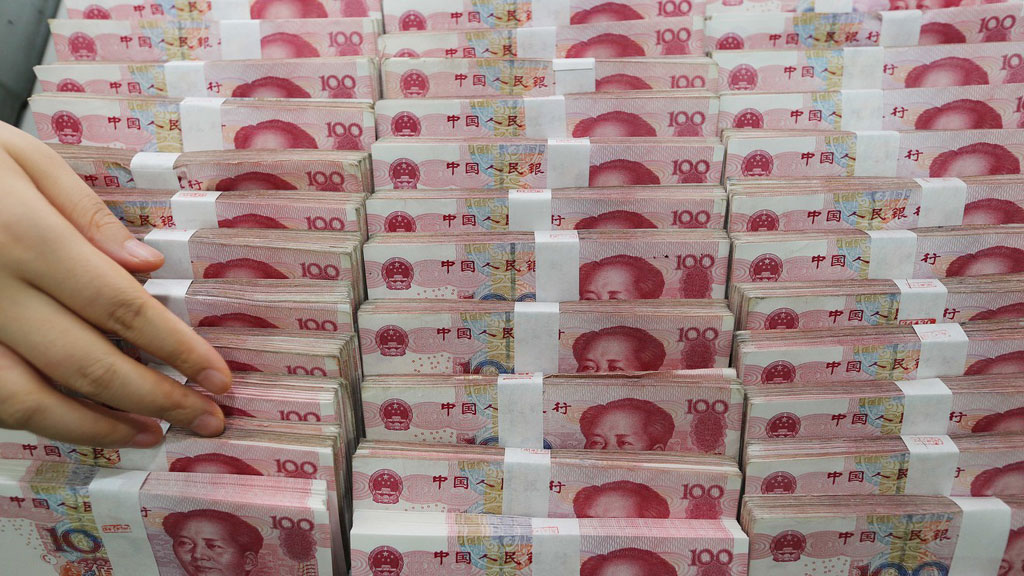 SHANGHAI: China's yuan inched lower against the dollar on Friday as market sentiment soured on renewed uncertainty in global trade and fresh signs of weakness in the manufacturing sector.
SHANGHAI: China's yuan inched lower against the dollar on Friday as market sentiment soured on renewed uncertainty in global trade and fresh signs of weakness in the manufacturing sector.
In the spot market, the onshore yuan opened at 6.9071 per dollar and was changing hands at 6.9097 at midday, 84 pips weaker than the previous late session close and 0.15 percent softer than the midpoint.
If the yuan finishes the late night session at the midday level, it would have lost 2.5 percent to the dollar for the month, the biggest monthly loss since July 2018.
Rapid losses in the Chinese currency this month were largely driven by a flare-up in trade tensions after US President Donald Trump said on May 5 he would raise tariffs on $200 billion of Chinese imports to 25 percent from 10 percent previously. The higher tariffs took effect on May 10.
China is set to impose higher tariffs on a revised $60 billion list of US goods to go into effect on Saturday.
Friday's official factory activity readings for May, a leading indicator, slumped into a deeper contraction than markets had expected, heaping pressure on Beijing to roll out more stimulus to support an economy.
Prior to market opening, the People's Bank of China (PBOC) set the midpoint rate at 6.8992 per dollar, 2 pips weaker than the previous fix of 6.8990.
The official yuan midpoint fixings in the past two weeks have been set in a very tight range, marginally firmer the psychologically-important 6.9 per dollar level.
Friday's guidance rate, as in previous fixings, remained stronger than market consensus, an indication the authorities may be attempting to curb strong yuan depreciation expectations. The official midpoint was 14 pips firmer than Reuters' estimate of 6.9006 on Friday.
A trader at a Chinese bank said the firmer-than-expected official fixing discouraged investors from aggressively testing lows in the yuan despite weak economic data at home and rising trade tensions after Washington said it would impose tariffs on Mexican goods.
Many believe the yuan is likely to trade narrowly before the G20 summit in Japan in late June where Trump is expected to meet his Chinese counterpart Xi Jinping.
Some analysts are debating again if Beijing will allow the currency to weaken past the critical 7 per dollar mark, a level that was last seen in global financial crisis.
"The other major message which returns is we are going above 7 eventually; it's only a matter of time. For China's economy, 7 does not matter," Cliff Tan, East Asian head of global markets research at MUFG Bank in Hong Kong said in a note.
"We think the public warnings are a reassurance to mainland firms and households that PBOC and other central authorities have the exchange rate well under control even if Trump isn't, so that there isn't the need to accelerate the outflow of funds."
Separately, Andrew Fennell, director and lead analyst for China sovereign ratings at Fitch Ratings, said the authorities had not used the exchange rate in prior easing cycles to support growth and was unlikely to do so now as it could pose macro stability risks.
"Given the extent the trade tensions remain, it's fair to say that there will be some downward pressure on the exchange rate but we don't think it's going to be policy driven ... We are not expecting a one-off depreciation as something we saw in 2015," he told a conference in Shanghai on Thursday.
The global dollar index fell to 98.14 at midday from the previous close of 98.142.
The offshore yuan was trading at 6.9314 per dollar as of midday.





















Comments
Comments are closed.